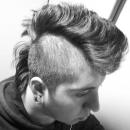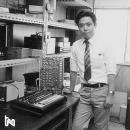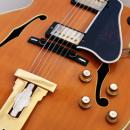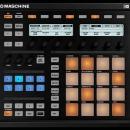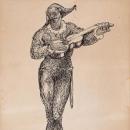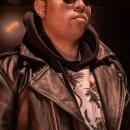Chus @ 04 May 2007 - 03:19 AM escribió:
Insites e insistes con lo de "pruebalo pruebalo!" y yo ya hace rato q te he explicado q LO HE PROBADO, como buenamente he podido por q hacerlo bien es un poco complicado por el ekipo, pero lo he probado... joder fourier, esta es la principal razon por las q me inclino a pensar q haga falta capturar mas alla d 20K!!, ¿todavia no te has enterado???
asi q en este respecto sige pensando lo q kieras, yo te digo q lo de la audimetria o generar un tono no es valido pq probablemente sea una percepcion inconsciente, yo lo describiria como una especie de aire q si solo te ponen el aire no lo oyes, pero q si q sabes decir durante la reproduccion si esta ahi o no. Al menos es mi sensacion personal, t recomiendo 96Khz para hacerlo y usar un filtro pasabajos d la mejor calidad q puedas (lo del filtro es la mayor pega, mas q nada pq se fabrican con el "rango clasico" en mente y lo mejor es programarse uno digital, pero yo no se como, asi q he usado uno analogico "custom made para la ocasion"), el ruido blanco supongo q sirva, pero yo no conozco ningun soft q genere ruido blanco hasta 50Khz, asi q yo use instrumentos reales, la pega esq la cadena d grabacion y reproduccion tiene q estar a la altura.
ademas de mi experiencia, he compartido contigo el articulo d andres mayo con lo del japo, la anecdota d R. neve, y te he comentado q Lavry, q es d los mas conservadores de la industria, y q aboga por no meterse en mas d 96Khz opina q hasta 40Khz si q hay q capturar.
Bueno, tu experimento demuestra que puedes oir el efecto de un filtro pasabajos, pero no dices dónde empieza a actuar este filtro. Yo creo que lo que notabas estaba por debajo de 20kHz (descríbeme mejor el experimento, demostrándome que el filtro no afctaba a la señal por debajo de los 20kHz y entonces igual cambio de opinión ).
Lo del japo, pues perfecto, nuestro cerebro responde a frecuencias superiores a los 20kHz. Perfecto. Ahora bien, ¿es necesario reproducir estas frecuencias para disfrutar de la música? Yo tengo un montón de discos (la mayoría en CD) que me encantan y me parecen geniales, y nunca he tenido la sensación de "me estoy perdiendo algo".
Tengo la sospecha de que esta obsesión por capturar más allá de este límite (20 khz) no ha aparecido hasta que los fabricantes nos han tenido que vender conversores a mayores sample rates, nuevos formatos como el DSD o el SACD... No sé, no sé...
Para compartir más material sobre el tema:
El capítulo 18 del libro de Katz (que parece que todos conocemos) explica los experimentos que hizo en 1996, filtrando material musical (incluso sabiendo que algunos de esos instrumentos emitían frecuencias superiores a los 20kHz) y comparando las versiones con filtro y sin filtro (un filtro digital creado para la ocasión). Ni él ni la demás gente que tomó parte en el experimento supo distinguir las dos versiones. O sea que Katz deduce, y yo estoy con él, en que la diferencia que notamos entre 96 y 44.1 khz no se debe a las frecuencias por encima de 20kHz, sino en el efecto de los filtros por debajo de 20kHz. (yo también he hecho mis pruebas, y me sigo cuestionando a menudo por si acaso algún día noto diferencia).
Más: Un fragmento de una entrevista con Daniel Weiss (
http://www.gearslutz.com/board/music-co ... -weiss-int erview-weiss-07-11-2006-a.html)
Si alguien que lea esto no entiende el inglés y le interesa leerlo, que lo diga y me pasaré un ratito traduciéndolo
Cita:
-My question is: Should everybody record with 384 khz?
-No, I agree with Dan Lavry that 192 khz is exaggerated. However, It IS important to note that the Nyquist theorem is true. That is absolutely clear. A classic example would be of the analog filters you need to limit the signal range. These analog filters would have to attenuate from 0 to 100 db between 20kHz and 22 khz .That is a very steep filter, and as you know, leads to phase distortion. It is it beneficial to sample with 96 khz in the sense that the analog filter can be much flatter. You set the audio band to 20 khz. So, with 20 khz, you can set the transition from 0 to – 100 db at between 20kHz and 48 khz. This results in a shallower curve decay and, as a result, a nicer phase run. Going back to 44.1 khz would require conversion into the new sampling frequency, and the re-implementation of the steep filter with a digital filter. One added bonus of working in the digital domain is that this entire process can be linear phase.
Bob Steward (Meridian) is more radical in his thinking, and suggests 60 khz as the ideal sampling frequency. That is a quite tangible opinion, and one that I agree with.
-So does this mean that you are already working on your first 60 khz converter?.
-No *grins*, it is not an accepted standard. If digital audio were created today,60 khz would be a very good baseline. CD evolved from video. From an audio standpoint this format is not suitable.
-Would you say that recording at a sampling rate of 96 khz is correct?
-Yes.
-Are you saying that working with 44.1 khz is fundamentally wrong?
-In principle, no. This depends entirely on how the conversion is implemented. The implementation in the AD converter is really the most important factor. There are no doubt substantial differences in the quality of the various filters being used. In the past, people tended to make everything as good as possible technically, E.g. by a implementing a very steep attenuation beginning at 20 khz. Doing this gives outstanding measurement results, and of course looks very good on paper. However, from a practical point of view, this is not necessary, as generally, the higher the sampling frequency, the lower the audio levels tend to be. In most cases it is safe to assume that at high sampling frequencies, the threshold is at most 20-30 db beneath the maximum level. This difference can then be subtracted from the necessary attenuation. This results in more unobtrusive filters.
In the past, Apogee offered analog filter modules for A/D and D/A converters. The “G” version did not have a steep filter edge. These components were renowned for their quality of sound.
-Is it true that, in the process of down sampling a 48 khz recording to 44.1 khz, one loses more than was gained by recording at 48kHz to begin with?
-I would say that today we have sampling rate converters that are very transparent at both 44.1 and 48 khz. It isn’t such a big deal. If for some reason you see an advantage in recording at 48 khz, then by all means do it. But it has to be noted that when downsampling 48 to 44.1 one loses the potential advantage which a 48khz recording could have, namely a less steep anti-aliasing filter.
-Is it possible that some converters are designed for optimum results at. say for 44.1 khz, or 48 khz , and that better results may be gleaned from working at these “target” sampling rates?
-It could be in that the analog or digital anti-aliasing filter is designed such that the slope is more gentle at 48kHz, because there is more room for it between 20kHz and half the sampling rate in the 48kHz case. So it could be that a converter sounds better at 48kHz. I doubt that one would see a converter sounding better at 44.1kHz.
(...)
-What is the best sample rate for recording?
-I guess you are alluding to the 48 khz vs. 96 khz discussion from earlier. Many would say that it is easier to scale down from 88.2 khz to 44.1 khz than from 96 khz to 44.1 khz. It does take more effort to scale down from 96 khz to 44.1 khz; as bigger filters are needed.
*A sample rate converter is basically a low-pass filter, with the respective management of the coefficient of the filter(digital filters).*
When converting from 88.2 khz to 44.1 khz, one must use a low-pass filter that separates at 22.05 khz. When converting from 96 khz to 44.1 khz, there are more filter coefficients, and, as a result, more memory is required. That is a disadvantage, but not a huge one in and of itself. The conversion from 96 khz to 44.1 khz can absolutely be as good as one that converts from 88.2 to 44.1 khz. A bit more resources are required, but in these days, that is no problem.
There can be sound differences among various converters, depending on the sampling rate used, because, as stated before, the sample rate is converted at the input, by the implementation of filters. These filters vary from brand to brand. With the various filters come artifacts, and different sound results.
Pues eso, un saludillo a todos y gracias por vuestras aportaciones. El hilo está siendo muy interesante y al final igual acabamos contestando a la pregunta inicial




